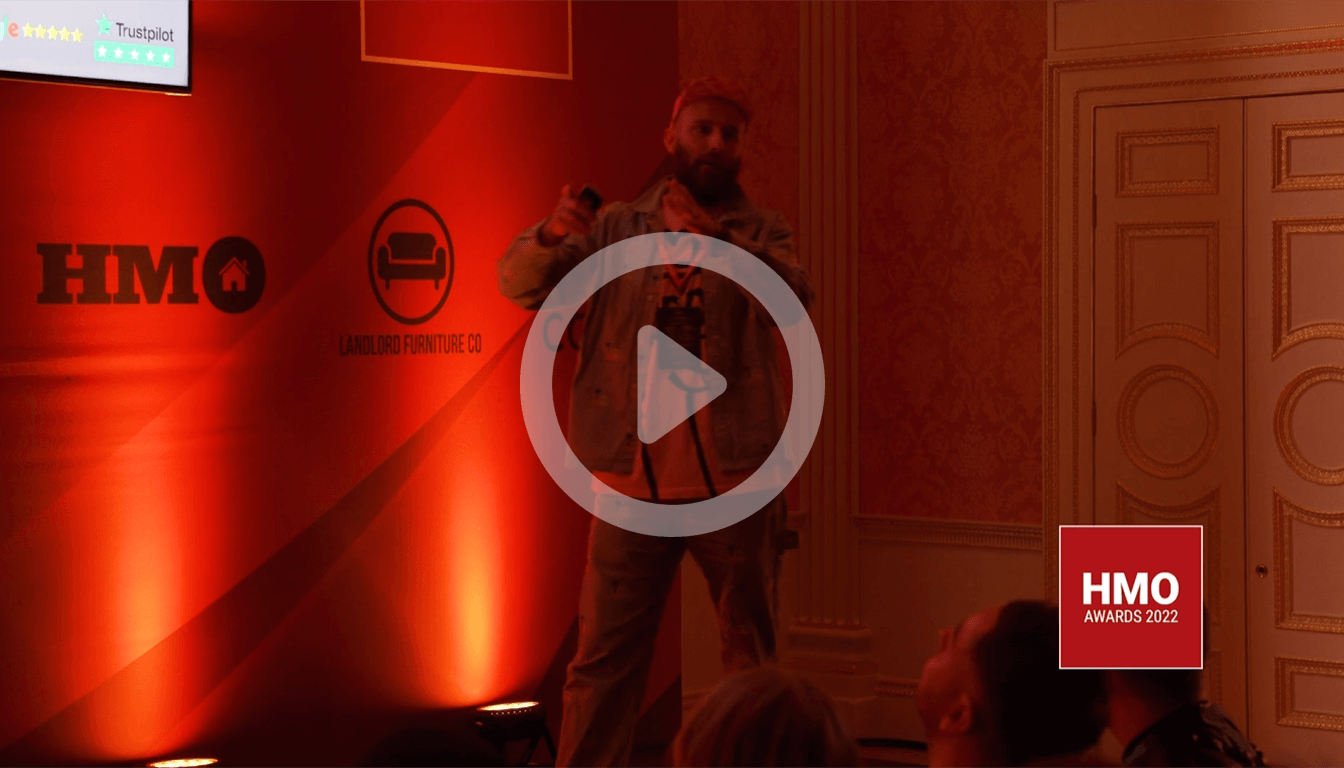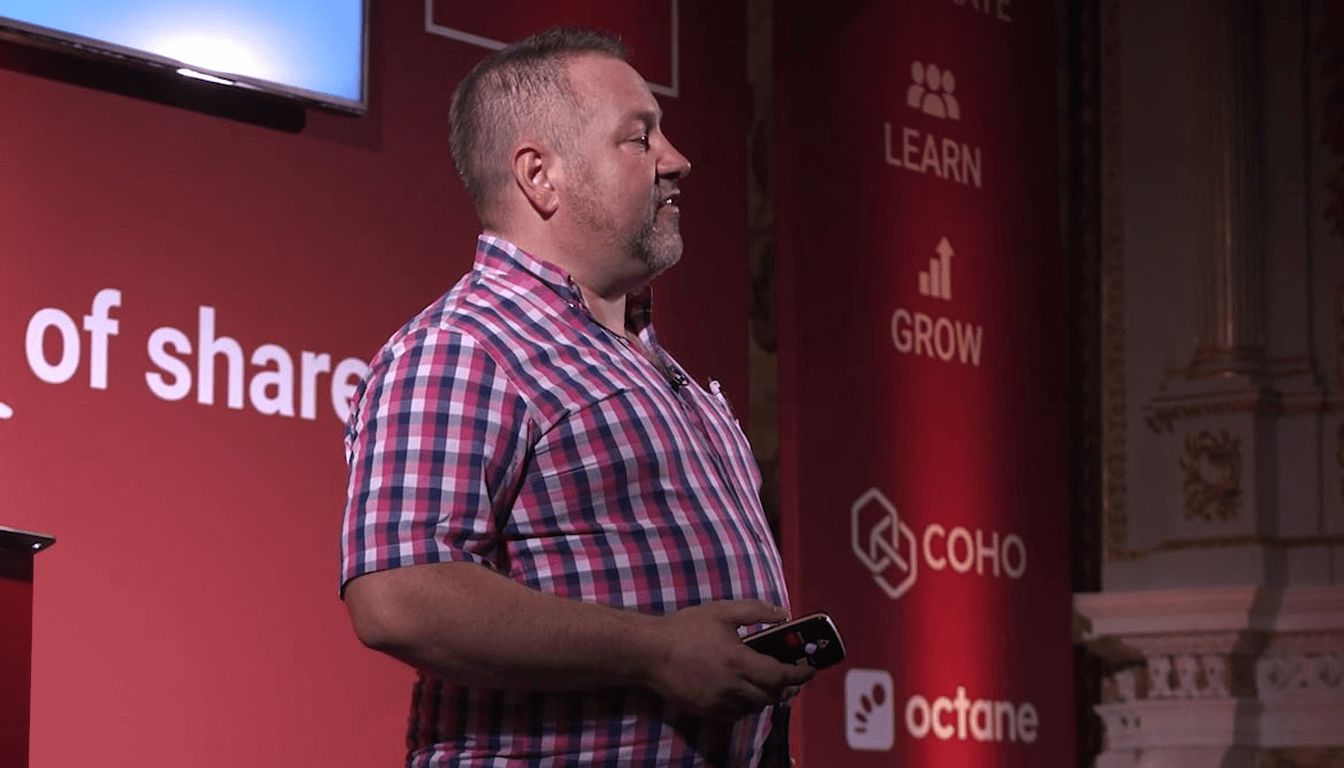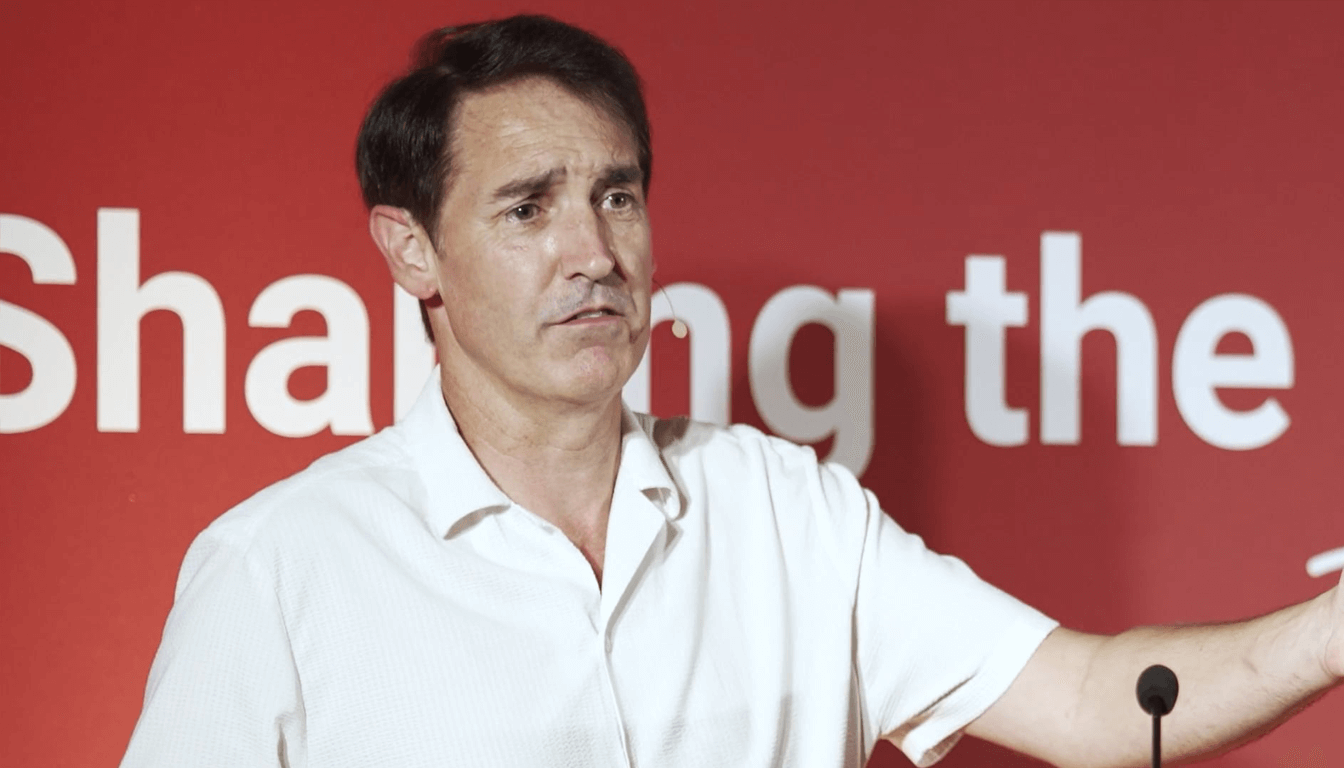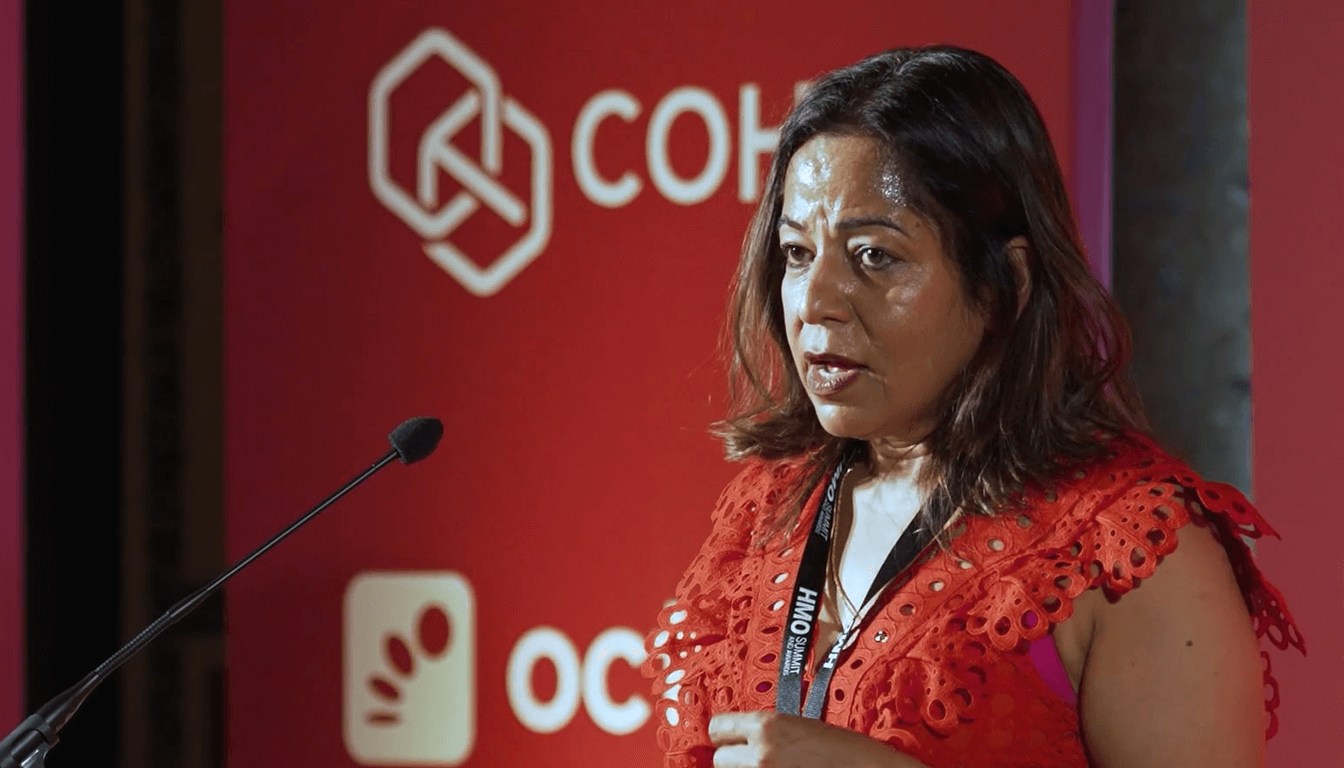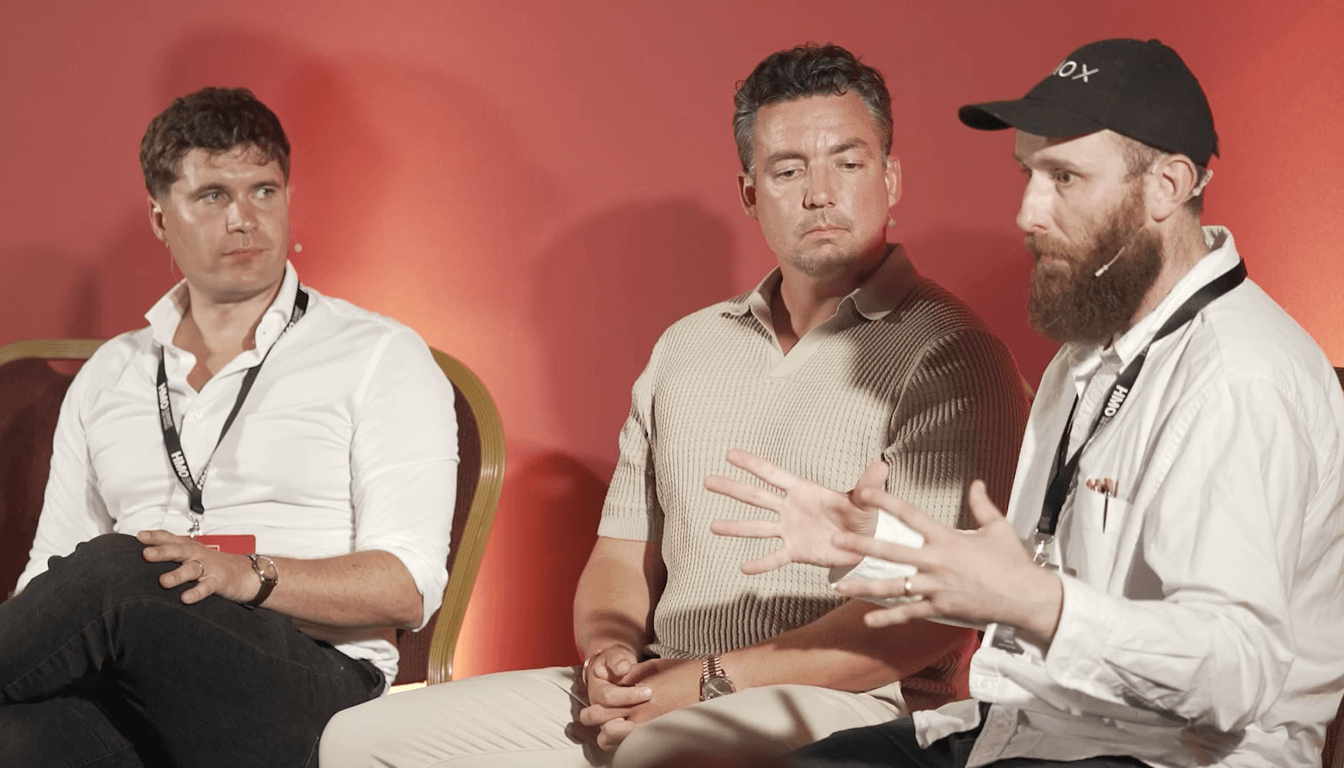Selling a House in Multiple Occupation (HMO) isn’t like selling a typical family home. It’s a business investment, and to maximize your return, you need to plan your exit strategy just as carefully as you planned the purchase and management. At a recent HMO Awards event, Richard Nicholls – founder of The Property Advantage (a specialist HMO brokerage) – shared invaluable insights on how HMO owners can prepare their properties for a successful sale. COHO was there to capture the key takeaways from Richard’s talk, and in this post we’ll summarize how to optimize your HMO for sale and avoid common pitfalls.
Understanding HMO Buyer Types: Buyer A vs. Buyer B
One of Richard’s core points was recognizing the two distinct types of HMO buyers in the market:
Buyer A: These are investors like many HMO landlords – hands-on property developers who prefer to buy a cheaper property (or a standard buy-to-let) and add value themselves. Buyer A will take on tasks like converting a 3-bed house into an HMO, handling renovations, dealing with planning applications (e.g. changing use from C3 to C4), and managing builders. They create their own equity by adding value through development. Buyer A is usually looking for a project and a bargain; they won’t pay a premium for a turnkey HMO because they’d rather build one from scratch and force the appreciation themselves.
Buyer B: These buyers are the hands-off investors who want a ready-made, income-producing HMO from day one. They might be overseas investors (for example, busy professionals in London or Hong Kong with capital to invest) or institutions like REITs and funds. Buyer B is willing to pay for convenience and certainty – they want cash flow starting in month one with no development hassles. They won’t touch risky projects or properties needing work; instead, they’ll pay a premium for a fully tenanted, well-run HMO where all the decisions and hard work have been done. In short, Buyer B values a turnkey investment and is often your ideal target when selling a finished HMO.
Richard explained that most HMO sales involve selling from a Buyer A (the current owner who developed the HMO) to a Buyer B (the new investor looking for passive income). Each group has different expectations. An HMO that Buyer A might think is “overpriced” (because it’s above bricks-and-mortar value after development) could be perfect for Buyer B who sees it as a hassle-free investment. Knowing your buyer type helps you tailor your sale approach and justify your price.
Plan Your HMO Exit Strategy Early
Unlike a family home which might be sold due to life changes (new job, growing family, etc.), an HMO is typically sold as part of an investment strategy. This means you have the power to choose when and how to exit – ideally at a time that maximizes your profit and fits your goals. Richard emphasized that planning the exit from day one (or at least well in advance) is crucial.
Think of your HMO’s lifecycle in three stages:
Acquisition and Development: You invest in the property, convert or upgrade it into an HMO, and add value using all the best practices (from clever design to high-yield layouts). This is where you create equity.
Management and Operation: You rent out rooms, manage tenants (either yourself or through an agent), and optimize the rental income and occupancy. This stage is about maximizing cash flow and maintaining quality.
Exit (Sale): Finally, you decide to sell the HMO. Here, the goal is to realize the gains from your investment. But to do so, the property must appeal to your target Buyer B and withstand due diligence.
Most HMO landlords focus heavily on stages 1 and 2, but stage 3 is just as important. If you neglect preparing for the sale, you risk underselling your asset or running into deal-killing issues when a buyer is lined up. As Richard put it, “It’s all about thinking of your ultimate exit as part of the overall investment plan.”
Don’t wait until you’re forced to sell due to some negative circumstance. Ideally, choose to sell on your own terms at the optimal time. Whether you plan to sell in 3 months or 3 years, start laying the groundwork now so that when the day comes, your HMO is sale-ready.
Why HMOs Often Fail to Sell (and How to Avoid It)
It might surprise you, but many listed HMOs never actually sell – or they fall out of bed (sale agreed but not completed). Richard noted that when he first started in HMO brokerage, he saw countless HMOs sitting on Rightmove or passed around investor WhatsApp groups that just wouldn’t get over the line. The conversion rate of HMO listings to completed sales was as low as 25%. The reason? Common pitfalls and “moving parts” unique to HMOs. Here are some frequent issues that can derail an HMO sale:
Licensing vs. Planning Mismatches: A very common problem is assuming an HMO license is the same as planning permission. For example, a property might have an 8-bed HMO license, but if it’s in an area without permitted development for that many occupants (or an Article 4 area requiring planning), it could legally be restricted to 6 occupants (use class C4). Lenders and solicitors will uncover this. If your license breaches planning rules, the sale will collapse unless corrected. Solution: Ensure your HMO’s planning status matches its license. If you’ve increased occupants above 6, secure the necessary planning permission or a Certificate of Lawful Use for the HMO. Even outside Article 4 areas, Richard suggests obtaining a Lawful Development Certificate (LDC) for peace of mind and proof of established use – many lenders now ask for it.
Poor or Incomplete Documentation: HMO investments live and die on numbers. Buyer B will want to see a track record of income and occupancy, but if you or your managing agent haven’t kept clear records, it raises red flags. Missing tenancy agreements, lack of rent schedules, or no evidence of how often rooms are filled can scare off buyers. Solution: Maintain an “occupancy history” – e.g., have a spreadsheet or system recording each room’s occupancy rate and void periods, plus accounts showing rental income over time. Keep copies of tenancy contracts and licenses. When you decide to sell, prepare a financial summary of the HMO’s performance (income, expenses, net profit) to instill confidence in buyers.
Unsettled Tenants or Management Chaos: A common scenario is the owner who self-manages and has great rapport with tenants – which is wonderful, but not transferable if the buyer isn’t local or doesn’t want to self-manage. Conversely, some HMOs suffer from tenant issues or high turnover. Buyer B wants a stable, hands-off investment, not a headache. Solution: Before sale, try to stabilize your tenant profile – ensure you have reliable, vetted occupants and address any troublemakers or arrears. Even consider moving in professional management if you currently self-manage. Having a trusted HMO managing agent in place who can continue post-sale is a huge plus for Buyer B. It means the buyer can seamlessly take over without worrying about day-to-day issues.
Inadequate Marketing and Presentation: Just like selling any property, how you present your HMO to the market matters. If your photos are dark or outdated, or you haven’t highlighted the property’s best features (like all en-suite rooms, or a high spec kitchen, etc.), you won’t attract the best buyers. Buyer B, especially if overseas, is likely relying on your marketing to make a decision. Solution: Treat it like a professional listing: invest in good photography (clean, well-lit rooms), provide a floorplan, and write a comprehensive description that includes location benefits, rent roll, and recent refurbishments. If you have a virtual tour or even video testimonials from happy housemates, all the better. Effective marketing not only attracts more buyers but also justifies your asking price by showcasing quality.
Overlooking Energy and Running Costs: With rising energy costs, HMOs that are poorly insulated or have inefficient systems can spook buyers who worry about high bills eating into profits (especially if bills are included in the rent). Solution: Optimize your HMO’s efficiency before sale. This might mean installing a smart thermostat, improving insulation, or showing evidence of modest utility bills. If you include bills in tenant rent, consider caps or usage monitoring to keep costs in check. An HMO that is “future-proofed” for efficient operation will stand out to savvy buyers.
By addressing these areas in advance, you prevent the last-minute scramble that often causes sales to fall through. Richard gave a powerful example: He was tasked with selling 11 HMOs from a portfolio in Kent that had been run poorly and fell into liquidation. Because those properties had missing paperwork, patchy tenant histories, and general neglect, they ended up selling for just around bricks-and-mortar value (or even below). Meanwhile, similar HMOs in the same area owned by attentive landlords (with good records and management) were fetching £100k more each. The difference was night and day – and it came down to preparation and presentation.
Key Steps to Prepare Your HMO for a High-Value Sale
So, what exactly should an HMO owner do before putting their property on the market? Here’s a handy checklist distilled from the talk:
Ensure Compliance and Certificates: Double-check that your HMO meets all licensing requirements and that you have the correct planning permission for the current use and number of occupants. If you’re in an Article 4 area (or even if not, for added certainty), obtain a Certificate of Lawfulness for the HMO use. Have all safety certificates up to date (Gas Safe, EICR, fire alarm testing, etc.) and your HMO license valid. A Buyer B (and their lender) will insist on seeing these.
Gather Financial and Occupancy Records: Compile a clear record of your rental income and occupancy rates. For example, prepare a document or folder with:
- Rent roll (list of rooms, current rents, and tenancy start dates).
- Past 12-24 months of occupancy/vacancy data for each room.
- Profit and loss statement for the HMO (annual expenses like utilities, council tax, cleaning, maintenance vs. rental income).
- Any capital expenditure or recent upgrades (new boiler, renovations, etc. with dates and costs).
- Having this ready not only inspires confidence but also speeds up the due diligence process once you find a buyer.
Optimize Rent and Expenses: Before selling, make sure you are achieving market rent for each room. If not, consider gentle rent increases (if justified and tenancy agreements allow) or at least know the potential. Likewise, streamline your expenses – e.g., negotiate better utility rates or service contracts. A higher net rental yield (and a demonstrable one) can often justify a higher sale price. Buyer B will be looking at the net yield and return on investment, so do what you can to optimize that figure before putting the property on the market.
Stabilize and Streamline Management: If you self-manage, consider putting a backup management plan in place. This might mean identifying a local HMO specialist letting agent who is willing to take over management for the new owner. Alternatively, if you have a reliable on-site manager or a lead tenant system, document how that works. The goal is to show that the property can be run smoothly without you. If any tenancy contracts are due to end soon, try to renew good tenants so the buyer isn’t walking into immediate voids. Basically, present a picture of a well-oiled machine in terms of management.
Polish the Property Presentation: First impressions count, even for seasoned investors. Walk through your HMO with fresh eyes (or have a friend or agent do so) and note any quick fixes. Is there any tired paint, minor repairs, or cleaning needed? Address maintenance issues proactively. A property in good repair with a pleasant, clean appearance will always impress buyers more – and they may be willing to pay a bit more for a place that clearly has been cared for. Also, prepare a document pack with everything a buyer might want to see: compliance certificates, license, insurance, building regs sign-offs for any works done, etc. Making this information readily available saves time during inquiries and conveys trustworthiness.
By following these steps, you’ll be “launch-ready” when you decide to sell. Richard stressed that hitting the market with impact is important – you want to impress Buyer B from the start with a complete, attractive package. If you can hand over a well-documented deal (often in a single Dropbox or folder as he joked), brokers and buyers will know you’re a serious seller with a quality asset, and negotiations will be more in your favor.
Selling on Your Terms (Not Under Duress)
Life is unpredictable, and many HMO sales happen for reactive reasons: a partner dispute, a divorce, financial troubles, burnout, or unexpected changes in personal circumstances. In fact, Richard revealed that roughly half of HMO sales in his pipeline were due to such negative triggers. HMOs, by their nature, tend to change hands more frequently than simpler buy-to-lets – they are high-yield investments but also higher management burden, so owners often plan to exit after a few years of strong cash flow or when their strategy changes.
By preparing early and treating your HMO with an investor’s mindset, you put yourself in a position to sell on your own terms. This means:
- You decide the timing (ideally when market conditions and your personal strategy align, rather than when a crisis forces your hand).
- You command a fair (even premium) price because you’ve done the homework to prove the HMO’s value to the next investor.
- You experience a smoother transaction with fewer surprises, because you’ve already tackled potential deal-breakers before a buyer ever steps in.
Richard’s ultimate advice was simple: “Think of your exit even while you’re doing the development at the very beginning.” When acquiring or creating an HMO, always keep the end buyer in mind. Is the property located in an area attractive to hands-off investors? Are you designing it and documenting it in a way that will be easy to transfer? By keeping those questions in focus, you ensure that when it’s time to move on, you’re handing over a turn-key, high-performance HMO that investors will line up to buy.
Final Thoughts
Preparing your HMO for a successful sale is not an overnight task – it’s a gradual process that runs parallel to your ownership journey. Whether you plan to sell in a couple of years or you’re already thinking of listing soon, it pays to get organized and view your property through the eyes of a Buyer B. They want a compliant, profitable, and hassle-free investment, so give them exactly that.
By following these expert insights from Richard Nicholls’ talk – understanding your buyer, planning ahead, avoiding common pitfalls, and optimizing every aspect of your HMO – you’ll set yourself up for a smooth sale and maximum return on your investment. Don’t be part of the statistic of failed HMO sales. With the right preparation, you can confidently transfer your HMO to a new owner while reaping the rewards of all your hard work.
Selling a House in Multiple Occupation (HMO) isn’t like selling a typical family home. It’s a business investment, and to maximize your return, you need to plan your exit strategy just as carefully as you planned the purchase and management. At a recent HMO Awards event, Richard Nicholls – founder of The Property Advantage (a specialist HMO brokerage) – shared invaluable insights on how HMO owners can prepare their properties for a successful sale. COHO was there to capture the key takeaways from Richard’s talk, and in this post we’ll summarize how to optimize your HMO for sale and avoid common pitfalls.
Understanding HMO Buyer Types: Buyer A vs. Buyer B
One of Richard’s core points was recognizing the two distinct types of HMO buyers in the market:
Buyer A: These are investors like many HMO landlords – hands-on property developers who prefer to buy a cheaper property (or a standard buy-to-let) and add value themselves. Buyer A will take on tasks like converting a 3-bed house into an HMO, handling renovations, dealing with planning applications (e.g. changing use from C3 to C4), and managing builders. They create their own equity by adding value through development. Buyer A is usually looking for a project and a bargain; they won’t pay a premium for a turnkey HMO because they’d rather build one from scratch and force the appreciation themselves.
Buyer B: These buyers are the hands-off investors who want a ready-made, income-producing HMO from day one. They might be overseas investors (for example, busy professionals in London or Hong Kong with capital to invest) or institutions like REITs and funds. Buyer B is willing to pay for convenience and certainty – they want cash flow starting in month one with no development hassles. They won’t touch risky projects or properties needing work; instead, they’ll pay a premium for a fully tenanted, well-run HMO where all the decisions and hard work have been done. In short, Buyer B values a turnkey investment and is often your ideal target when selling a finished HMO.
Richard explained that most HMO sales involve selling from a Buyer A (the current owner who developed the HMO) to a Buyer B (the new investor looking for passive income). Each group has different expectations. An HMO that Buyer A might think is “overpriced” (because it’s above bricks-and-mortar value after development) could be perfect for Buyer B who sees it as a hassle-free investment. Knowing your buyer type helps you tailor your sale approach and justify your price.
Plan Your HMO Exit Strategy Early
Unlike a family home which might be sold due to life changes (new job, growing family, etc.), an HMO is typically sold as part of an investment strategy. This means you have the power to choose when and how to exit – ideally at a time that maximizes your profit and fits your goals. Richard emphasized that planning the exit from day one (or at least well in advance) is crucial.
Think of your HMO’s lifecycle in three stages:
Acquisition and Development: You invest in the property, convert or upgrade it into an HMO, and add value using all the best practices (from clever design to high-yield layouts). This is where you create equity.
Management and Operation: You rent out rooms, manage tenants (either yourself or through an agent), and optimize the rental income and occupancy. This stage is about maximizing cash flow and maintaining quality.
Exit (Sale): Finally, you decide to sell the HMO. Here, the goal is to realize the gains from your investment. But to do so, the property must appeal to your target Buyer B and withstand due diligence.
Most HMO landlords focus heavily on stages 1 and 2, but stage 3 is just as important. If you neglect preparing for the sale, you risk underselling your asset or running into deal-killing issues when a buyer is lined up. As Richard put it, “It’s all about thinking of your ultimate exit as part of the overall investment plan.”
Don’t wait until you’re forced to sell due to some negative circumstance. Ideally, choose to sell on your own terms at the optimal time. Whether you plan to sell in 3 months or 3 years, start laying the groundwork now so that when the day comes, your HMO is sale-ready.
Why HMOs Often Fail to Sell (and How to Avoid It)
It might surprise you, but many listed HMOs never actually sell – or they fall out of bed (sale agreed but not completed). Richard noted that when he first started in HMO brokerage, he saw countless HMOs sitting on Rightmove or passed around investor WhatsApp groups that just wouldn’t get over the line. The conversion rate of HMO listings to completed sales was as low as 25%. The reason? Common pitfalls and “moving parts” unique to HMOs. Here are some frequent issues that can derail an HMO sale:
Licensing vs. Planning Mismatches: A very common problem is assuming an HMO license is the same as planning permission. For example, a property might have an 8-bed HMO license, but if it’s in an area without permitted development for that many occupants (or an Article 4 area requiring planning), it could legally be restricted to 6 occupants (use class C4). Lenders and solicitors will uncover this. If your license breaches planning rules, the sale will collapse unless corrected. Solution: Ensure your HMO’s planning status matches its license. If you’ve increased occupants above 6, secure the necessary planning permission or a Certificate of Lawful Use for the HMO. Even outside Article 4 areas, Richard suggests obtaining a Lawful Development Certificate (LDC) for peace of mind and proof of established use – many lenders now ask for it.
Poor or Incomplete Documentation: HMO investments live and die on numbers. Buyer B will want to see a track record of income and occupancy, but if you or your managing agent haven’t kept clear records, it raises red flags. Missing tenancy agreements, lack of rent schedules, or no evidence of how often rooms are filled can scare off buyers. Solution: Maintain an “occupancy history” – e.g., have a spreadsheet or system recording each room’s occupancy rate and void periods, plus accounts showing rental income over time. Keep copies of tenancy contracts and licenses. When you decide to sell, prepare a financial summary of the HMO’s performance (income, expenses, net profit) to instill confidence in buyers.
Unsettled Tenants or Management Chaos: A common scenario is the owner who self-manages and has great rapport with tenants – which is wonderful, but not transferable if the buyer isn’t local or doesn’t want to self-manage. Conversely, some HMOs suffer from tenant issues or high turnover. Buyer B wants a stable, hands-off investment, not a headache. Solution: Before sale, try to stabilize your tenant profile – ensure you have reliable, vetted occupants and address any troublemakers or arrears. Even consider moving in professional management if you currently self-manage. Having a trusted HMO managing agent in place who can continue post-sale is a huge plus for Buyer B. It means the buyer can seamlessly take over without worrying about day-to-day issues.
Inadequate Marketing and Presentation: Just like selling any property, how you present your HMO to the market matters. If your photos are dark or outdated, or you haven’t highlighted the property’s best features (like all en-suite rooms, or a high spec kitchen, etc.), you won’t attract the best buyers. Buyer B, especially if overseas, is likely relying on your marketing to make a decision. Solution: Treat it like a professional listing: invest in good photography (clean, well-lit rooms), provide a floorplan, and write a comprehensive description that includes location benefits, rent roll, and recent refurbishments. If you have a virtual tour or even video testimonials from happy housemates, all the better. Effective marketing not only attracts more buyers but also justifies your asking price by showcasing quality.
Overlooking Energy and Running Costs: With rising energy costs, HMOs that are poorly insulated or have inefficient systems can spook buyers who worry about high bills eating into profits (especially if bills are included in the rent). Solution: Optimize your HMO’s efficiency before sale. This might mean installing a smart thermostat, improving insulation, or showing evidence of modest utility bills. If you include bills in tenant rent, consider caps or usage monitoring to keep costs in check. An HMO that is “future-proofed” for efficient operation will stand out to savvy buyers.
By addressing these areas in advance, you prevent the last-minute scramble that often causes sales to fall through. Richard gave a powerful example: He was tasked with selling 11 HMOs from a portfolio in Kent that had been run poorly and fell into liquidation. Because those properties had missing paperwork, patchy tenant histories, and general neglect, they ended up selling for just around bricks-and-mortar value (or even below). Meanwhile, similar HMOs in the same area owned by attentive landlords (with good records and management) were fetching £100k more each. The difference was night and day – and it came down to preparation and presentation.
Key Steps to Prepare Your HMO for a High-Value Sale
So, what exactly should an HMO owner do before putting their property on the market? Here’s a handy checklist distilled from the talk:
Ensure Compliance and Certificates: Double-check that your HMO meets all licensing requirements and that you have the correct planning permission for the current use and number of occupants. If you’re in an Article 4 area (or even if not, for added certainty), obtain a Certificate of Lawfulness for the HMO use. Have all safety certificates up to date (Gas Safe, EICR, fire alarm testing, etc.) and your HMO license valid. A Buyer B (and their lender) will insist on seeing these.
Gather Financial and Occupancy Records: Compile a clear record of your rental income and occupancy rates. For example, prepare a document or folder with:
- Rent roll (list of rooms, current rents, and tenancy start dates).
- Past 12-24 months of occupancy/vacancy data for each room.
- Profit and loss statement for the HMO (annual expenses like utilities, council tax, cleaning, maintenance vs. rental income).
- Any capital expenditure or recent upgrades (new boiler, renovations, etc. with dates and costs).
- Having this ready not only inspires confidence but also speeds up the due diligence process once you find a buyer.
Optimize Rent and Expenses: Before selling, make sure you are achieving market rent for each room. If not, consider gentle rent increases (if justified and tenancy agreements allow) or at least know the potential. Likewise, streamline your expenses – e.g., negotiate better utility rates or service contracts. A higher net rental yield (and a demonstrable one) can often justify a higher sale price. Buyer B will be looking at the net yield and return on investment, so do what you can to optimize that figure before putting the property on the market.
Stabilize and Streamline Management: If you self-manage, consider putting a backup management plan in place. This might mean identifying a local HMO specialist letting agent who is willing to take over management for the new owner. Alternatively, if you have a reliable on-site manager or a lead tenant system, document how that works. The goal is to show that the property can be run smoothly without you. If any tenancy contracts are due to end soon, try to renew good tenants so the buyer isn’t walking into immediate voids. Basically, present a picture of a well-oiled machine in terms of management.
Polish the Property Presentation: First impressions count, even for seasoned investors. Walk through your HMO with fresh eyes (or have a friend or agent do so) and note any quick fixes. Is there any tired paint, minor repairs, or cleaning needed? Address maintenance issues proactively. A property in good repair with a pleasant, clean appearance will always impress buyers more – and they may be willing to pay a bit more for a place that clearly has been cared for. Also, prepare a document pack with everything a buyer might want to see: compliance certificates, license, insurance, building regs sign-offs for any works done, etc. Making this information readily available saves time during inquiries and conveys trustworthiness.
By following these steps, you’ll be “launch-ready” when you decide to sell. Richard stressed that hitting the market with impact is important – you want to impress Buyer B from the start with a complete, attractive package. If you can hand over a well-documented deal (often in a single Dropbox or folder as he joked), brokers and buyers will know you’re a serious seller with a quality asset, and negotiations will be more in your favor.
Selling on Your Terms (Not Under Duress)
Life is unpredictable, and many HMO sales happen for reactive reasons: a partner dispute, a divorce, financial troubles, burnout, or unexpected changes in personal circumstances. In fact, Richard revealed that roughly half of HMO sales in his pipeline were due to such negative triggers. HMOs, by their nature, tend to change hands more frequently than simpler buy-to-lets – they are high-yield investments but also higher management burden, so owners often plan to exit after a few years of strong cash flow or when their strategy changes.
By preparing early and treating your HMO with an investor’s mindset, you put yourself in a position to sell on your own terms. This means:
- You decide the timing (ideally when market conditions and your personal strategy align, rather than when a crisis forces your hand).
- You command a fair (even premium) price because you’ve done the homework to prove the HMO’s value to the next investor.
- You experience a smoother transaction with fewer surprises, because you’ve already tackled potential deal-breakers before a buyer ever steps in.
Richard’s ultimate advice was simple: “Think of your exit even while you’re doing the development at the very beginning.” When acquiring or creating an HMO, always keep the end buyer in mind. Is the property located in an area attractive to hands-off investors? Are you designing it and documenting it in a way that will be easy to transfer? By keeping those questions in focus, you ensure that when it’s time to move on, you’re handing over a turn-key, high-performance HMO that investors will line up to buy.
Final Thoughts
Preparing your HMO for a successful sale is not an overnight task – it’s a gradual process that runs parallel to your ownership journey. Whether you plan to sell in a couple of years or you’re already thinking of listing soon, it pays to get organized and view your property through the eyes of a Buyer B. They want a compliant, profitable, and hassle-free investment, so give them exactly that.
By following these expert insights from Richard Nicholls’ talk – understanding your buyer, planning ahead, avoiding common pitfalls, and optimizing every aspect of your HMO – you’ll set yourself up for a smooth sale and maximum return on your investment. Don’t be part of the statistic of failed HMO sales. With the right preparation, you can confidently transfer your HMO to a new owner while reaping the rewards of all your hard work.


